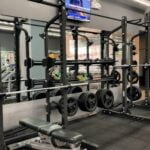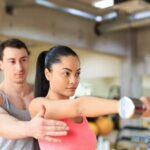Tai Chi exercises for fitness have gained popularity in recent years for their numerous physical and mental health benefits. Originating as an ancient martial art in China, Tai Chi has evolved into a gentle form of exercise that focuses on cultivating balance, strength, and relaxation. In this article, we will explore the advantages of incorporating Tai Chi into your fitness routine, from its rich history to the various techniques and poses used in practice.
As we delve into the history of Tai Chi, we will uncover its roots in Chinese philosophy and traditional medicine. Understanding the principles behind this art form can provide insight into how it promotes overall well-being through movement and mindfulness. Additionally, we will discuss the evolution of Tai Chi from a self-defense practice to a widely practiced form of exercise known for improving flexibility, coordination, and mental focus.
The health benefits of Tai Chi extend beyond the physical realm, as research has shown its positive effects on reducing stress, anxiety, and chronic pain. By exploring how Tai Chi can enhance both physical and mental wellness, individuals can gain a deeper appreciation for this holistic approach to fitness.
Whether you are new to Tai Chi or a seasoned practitioner looking to advance your skills, this introductory section will set the stage for a comprehensive exploration of Tai Chi exercises for improved fitness and overall health.
History of Tai Chi
Tai Chi, also known as Tai Chi Chuan, is a traditional Chinese martial art that dates back centuries. Developed in ancient China, Tai Chi is rooted in the principles of Taoism and the concept of Yin and Yang.
The practice emphasizes the cultivation of internal energy or qi through slow, deliberate movements and controlled breathing techniques. Known for its graceful and flowing sequences, Tai Chi has evolved from a self-defense practice to a popular form of exercise for physical and mental well-being.
Origins of Tai Chi
The origins of Tai Chi can be traced back to the Chen Village in Wenxian County, Henan Province, where it was founded by Chen Wangting during the 17th century. Over time, different styles of Tai Chi emerged, each with its unique characteristics and forms.
The most common styles include Chen, Yang, Wu/Hao, Wu, and Sun. Despite these variations, all styles of Tai Chi share the fundamental principles of slow, continuous movements that promote balance, flexibility, and harmony within the body.
Principles of Tai Chi
At the core of Tai Chi are several key principles that guide practitioners in their practice. These principles include relaxation, alignment, coordination, mindfulness, and smoothness of movement.
By focusing on these principles when performing Tai Chi exercises for fitness or martial arts applications, individuals can experience improved posture, reduced stress levels, enhanced flexibility, increased strength and endurance-all contributing to overall physical fitness and well-being. Whether you are a beginner just starting out or an advanced practitioner looking to deepen your practice, understanding the origins and principles of Tai Chi is essential for harnessing its full benefits.
Health Benefits of Tai Chi
Tai Chi is not just a physical exercise but also a practice that can greatly improve both physical and mental well-being. The slow, deliberate movements of Tai Chi promote balance, flexibility, and strength, making it an excellent form of low-impact exercise for people of all ages.
Regular practice of Tai Chi has been known to reduce stress levels and improve overall mood, leading to better mental health. This mind-body connection is a fundamental aspect of Tai Chi that sets it apart from other forms of exercise.
One of the key health benefits of Tai Chi is its ability to enhance cardiovascular fitness. Despite its gentle appearance, practicing Tai Chi can increase heart rate and promote better circulation throughout the body. This can help improve cardiovascular health over time, reducing the risk of heart disease and other related conditions. Additionally, the focus on deep breathing in Tai Chi exercises can help lower blood pressure and improve respiratory function.
Furthermore, Tai Chi has been shown to have positive effects on mental health by reducing anxiety and depression symptoms. The meditative nature of this practice encourages mindfulness and presence in the moment, which can be beneficial for those dealing with stress or emotional difficulties. As a holistic form of exercise, Tai Chi addresses both the physical and mental aspects of well-being, making it a versatile activity for those looking to improve their overall health through mindful movement.
| Health Benefit | Description |
|---|---|
| Cardiovascular Fitness | Tai Chi promotes better circulation and heart health through its gentle yet effective movements. |
| Mental Health | Reduces anxiety and depression symptoms by encouraging mindfulness and focus during practice. |
| Stress Reduction | The meditative aspect of Tai Chi helps lower stress levels and promote relaxation for better overall well-being. |
Tai Chi Techniques
Tai Chi, a traditional Chinese martial art known for its graceful movements and focus on mindfulness, offers a range of health benefits for both the body and mind. Incorporating Tai Chi exercises into your fitness routine can not only improve your physical fitness but also enhance your overall well-being. By practicing these flowing movements, you can build strength, flexibility, balance, and coordination while reducing stress and promoting relaxation.
To better understand the practice of Tai Chi, it’s important to break down some of the common movements and poses used in this ancient art form:
- Opening stance: Begin with your feet shoulder-width apart and knees slightly bent. Relax your shoulders and extend your arms out to the sides.
- Wave hands like clouds: Shift your weight from one leg to the other in a smooth, continuous motion while moving your arms in a circular pattern in front of your body.
- Grasping the sparrow’s tail: This series of movements involves warding off, rolling back, pressing, and pushing energy while maintaining a grounded stance and fluid transitions.
- Horse stance: Sink down into a deep squat position with your knees aligned over your toes, engaging your core muscles and keeping your back straight.
By practicing these Tai Chi techniques regularly, you can improve your posture, increase body awareness, and achieve a sense of inner calmness. Whether you are a beginner or an experienced practitioner, mastering these foundational movements is essential for reaping the full benefits of tai chi exercises for fitness. Embrace the flow of energy and movement in each pose to tap into the transformative power of Tai Chi in enhancing both physical and mental wellness.
Tai Chi Equipment
Tai Chi is a gentle form of exercise that combines slow, flowing movements with deep breathing and meditation. It is an ancient martial art that has been practiced for centuries in China and has gained popularity worldwide for its numerous health benefits. To practice Tai Chi effectively, there are some basic items needed, whether you are practicing at home or in a studio.
Comfortable Clothing
One of the most important things to consider when practicing Tai Chi is wearing loose and comfortable clothing that allows for easy movement. Traditional Tai Chi uniforms are available, but any loose-fitting clothing like sweatpants and a t-shirt will work just fine. The key is to wear something that allows you to move freely without any restrictions.
Flat Shoes
While practicing Tai Chi can be done barefoot, some practitioners prefer wearing flat shoes with thin soles to provide traction and support during movements. Look for shoes that have a non-slip sole and do not have a high heel to ensure stability while moving through the exercises.
Tai Chi Mat or Rug
To enhance your practice and provide comfort when standing for extended periods, consider using a Tai Chi mat or rug. These mats are typically thicker than traditional yoga mats and provide cushioning for your feet while also offering grip on smooth surfaces. Having a dedicated space with a mat or rug can help create a serene environment for your Tai Chi practice.
By ensuring you have these basic items – comfortable clothing, flat shoes, and possibly a Tai Chi mat or rug – you can set yourself up for success when incorporating Tai Chi exercises into your fitness routine. These simple tools will support your practice and help you fully experience the physical and mental benefits of this ancient martial art.
Tai Chi for Beginners
When starting a new fitness routine, especially one as unique and beneficial as Tai Chi exercises, it is essential to approach it with an open mind and willingness to learn. Here are some tips and advice for beginners looking to explore the world of Tai Chi:
- Find a Qualified Instructor: Look for a certified Tai Chi instructor who can guide you through the proper techniques and movements. A skilled teacher can help you understand the principles of Tai Chi and ensure you are practicing safely and effectively.
- Start Slowly: Tai Chi is all about flow and mindfulness, so don’t rush through the movements. Take your time to focus on each posture and transition smoothly between them. It’s more important to grasp the correct form than to do it quickly.
- Practice Regularly: Consistency is key when learning Tai Chi. Try to establish a daily practice routine, even if it’s just for a few minutes each day. Over time, you will see improvement in your balance, flexibility, and overall well-being.
As a beginner, don’t get discouraged if you find certain poses challenging or struggle with coordination at first. Like any form of exercise, mastering Tai Chi takes time and patience. Remember that the journey itself is as rewarding as reaching your goals. With dedication and perseverance, you’ll soon experience the amazing benefits of incorporating Tai Chi exercises into your fitness routine.
Advanced Tai Chi Workouts
Tai Chi, known for its gentle and flowing movements, can also offer a high level of challenge for those who have mastered the basics. Advanced Tai Chi workouts involve complex sequences of movements that require precision, balance, and focus. These routines not only provide a physical workout but also stimulate the mind as practitioners must remember and execute intricate patterns of motion.
One advanced Tai Chi technique that experienced practitioners often practice is the “Silk Reeling” exercise. This movement involves continuous spiraling motions that flow smoothly from one to the next. It requires coordination between the upper and lower body while engaging the core muscles to create a seamless energy flow. Mastering Silk Reeling can enhance flexibility, strength, and body awareness – all essential components of physical fitness.
Another challenging aspect of advanced Tai Chi workouts is the incorporation of martial arts applications into the forms. While Tai Chi is primarily practiced for health and relaxation, it is rooted in martial arts tradition. Advanced practitioners may learn how to use their movements defensively or offensively, adding a new layer of complexity to their practice. This aspect not only offers a deeper understanding of Tai Chi’s self-defense applications but also provides a rigorous mental and physical workout.
| Category | Information |
|---|---|
| Advanced Technique | Silk Reeling exercise involving continuous spiraling motions |
| Incorporation | Incorporating martial arts applications into advanced Tai Chi forms |
| Benefits | Enhanced flexibility, strength, body awareness through advanced Tai chi workouts |
Incorporating Tai Chi Into a Fitness Routine
Tai Chi is a versatile form of exercise that can easily be integrated into a well-rounded fitness routine. By combining Tai Chi exercises with other forms of physical activity, individuals can enjoy a variety of health benefits while keeping their workout regimen engaging and dynamic.
One popular way to incorporate Tai Chi into a fitness routine is by alternating between more vigorous workouts, such as cardio or strength training, with the gentle flowing movements of Tai Chi. This contrast allows for a balanced approach to physical fitness, providing both high-intensity and low-impact exercise.
Another effective method of combining Tai Chi with other forms of exercise is to use it as a warm-up or cool-down activity. Beginning or ending a workout session with Tai Chi can help improve flexibility, balance, and focus while promoting relaxation and reducing stress levels.
Additionally, integrating Tai Chi into a multi-disciplinary fitness program, such as yoga or Pilates, can further enhance the overall benefits of each practice. The slow, deliberate movements of Tai Chi complement the controlled postures of these disciplines, creating a harmonious blend of mind-body exercises.
For those looking to challenge themselves further, advanced practitioners can explore fusion classes that combine Tai Chi with more intense workouts like kickboxing or circuit training. These hybrid classes offer a unique opportunity to experience the fluidity and grace of Tai Chi alongside the intensity and power of other fitness modalities.
By experimenting with different combinations and approaches, individuals can tailor their fitness routine to suit their preferences and goals while reaping the numerous rewards that come from incorporating Tai Chi exercises for fitness into their daily regimen.
Conclusion
In conclusion, Tai Chi exercises offer a unique and effective way to improve both fitness and overall health. The benefits of incorporating Tai Chi into a fitness routine are numerous, including increased strength, balance, flexibility, and mental clarity. By understanding the history and principles of this ancient martial art, individuals can gain a deeper appreciation for its holistic approach to well-being.
Not only does Tai Chi provide physical benefits, but it also offers mental and emotional advantages. The meditative aspect of the practice can help reduce stress, anxiety, and improve mindfulness. By learning Tai Chi techniques and poses, practitioners can improve their focus and concentration while cultivating a sense of inner peace.
Whether you are a beginner looking to start your journey with Tai Chi exercises or an experienced practitioner seeking more advanced workouts, there is something for everyone in this versatile practice. By integrating Tai Chi with other forms of exercise in a well-rounded fitness routine, individuals can experience comprehensive benefits for their mind, body, and spirit. So why not give it a try? Embrace the ancient wisdom of Tai Chi for improved fitness and health today.
Frequently Asked Questions
Can Tai Chi Make You Fit?
Tai Chi is a gentle form of exercise that can improve fitness over time. While it may not be as intense as some other workouts, consistent practice can increase strength, flexibility, balance, and overall well-being.
What Are Some Tai Chi Exercises?
Some common Tai Chi exercises include the “Tai Chi walk,” where practitioners move slowly and mindfully while focusing on their posture and breathing. Other exercises involve flowing movements that work various muscle groups and promote relaxation.
What Are the 5 Techniques of Tai Chi?
The five techniques of Tai Chi are ward-off, rollback, press, push, and pull-down. These techniques are essential components of Tai Chi practice and help develop coordination, strength, and mindfulness. Each technique involves specific body movements that flow seamlessly from one to the next during a Tai Chi routine.

Passionate about providing useful information to anyone with an interest in the field of Personal Training, I strive to pass on to our readers quality information and to answer any questions about Personal Trainers, the work they do and how to become one.





